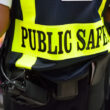Lack of communications training remains an issue
This article is the third in a series regarding best practices for Project 25 (P25) systems that were unveiled during a workshop in Washington, D.C., sponsored by Tait Communications.
Communications are a lifeline to first responders during emergency response, but getting approval for the funding and time needed to train personnel properly continues to be a challenge, P25 system managers said during a best-practices workshop in Washington, D.C., sponsored by Tait Communications.
Many police departments provide quarterly training to officers on the use of firearms, but similar guidance typically is not provided for the use of mission-critical radio systems and devices, according to Larry Britton, radio systems specialist for Charleston County, S.C.
“I got handed my portable when I got started, and that was the end,” Britton said. “In 20 years, I did not fire a shot in anger. But I used my radio 70 times per day.”
Paul Leary, chief of communications for the state of New Hampshire, said one reason that government entities are willing to fund firearms training is because of the legal liabilities they may assume if an officer is involved in a wrongful shooting and has not been trained properly. A first responder’s inability to operate a communications device properly during an emergency also can jeopardize the lives of citizens and first responders, but that argument does not seem to resonate as much with elected officials, he said.
“We’ve been fighting that for the last four years, but it’s a losing battle,” Leary said.
Some public-safety entities provide solid education about their communications systems to new personnel, but they do not provide a similar level of training on an ongoing basis, so not all personnel know how to utilize upgraded functionality and may forget some techniques that were learned initially but have not been used on a regular basis, said Craig Jorgenson, former president of the P25 steering committee.
“Worst of all are commanders,” Jorgenson said. “Leadership tends to say, ‘I know all of that stuff; I don’t need to be trained on it.’”
This lack of training can be detrimental, both at an individual and system level, Jorgenson said. In fact, one unidentified public-safety agency struggled to communicate during a recent incident, because it had not conducted any training exercises to simulate the response to such an emergency, he said.
“They had the policies and all the things in place, but they had never experienced it, so all of that knowledge and all of that information was all for naught,” Jorgenson said. “It doesn’t do any good to have an emergency plan, if you don’t test it.”















In my travels around the
In my travels around the country working with radio interoperability gateways, it is obvious that little or no training is done with the user and radios. It seems there is little formal training on the use of radios and the radio systems by the responsible agencies.
These agencies hold drills on incidents and responses. But I have not heard of any radio classes held for any of the police, fire or EMS members. In trying to stand back and take a view from afar, I would have to say that there is no time set aside for any radio training.
Just how much effort needs to be put into setting up any radio training will depend on the different agencies. Some have a good training officer that is that person’s only job. Other departments time share the training officer between regular work and part time training.
If there is a time share or budget issue, then maybe it might be a suggestion to locate a local ham radio operator. See if that person could help teach radio 101 to the agency members. I know many hams that devote many hours a year to their local public safety agencies helping where they can.
Each agency will have different issues and trying to solve them may not be easy. The first place to start is to identify what those issues are. The next step is to get the upper management to support working on the solution.